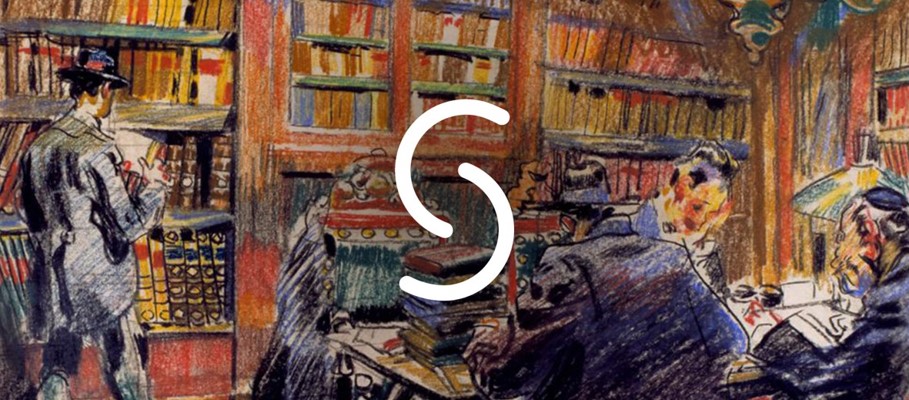Comune di Livorno
Item
-
Country
-
IT
-
Name of institution (English)
-
State Archives of Livorno
-
Language of name of institution
-
ita
-
Contact information: postal address
-
Palazzo del Governo, Via Fiume 40, 57123 Livorno
-
Contact information: phone number
-
0039 0586897776
-
Contact information: email
-
as-li@beniculturali.it
-
Reference number
-
Comune di Livorno
-
Type of reference number
-
Archival reference number
-
Title (English)
-
Livorno City Council
-
Title (official language of the state)
-
Comune di Livorno
-
Language of title
-
ita
-
Creator / accumulator
-
Comune di Livorno
-
Date(s)
-
1421/1808
-
Language(s)
-
ita
-
Extent
-
363 storage units
-
Type of material
-
Textual Material
-
Scope and content
-
The Comune di Livorno fonds comprises records produced by the municipal governing body of Livorno since the 15th century until the early 19th century. These records include the Comune's statutes, deliberations, correspondence, orders, account records, lists of residents, and records regarding citizenship, territorial jurisdiction, military housing, taxes, as well as several other affairs related to the city's daily administration.
The Jewish community of Livorno was represented in the city council by a deputy. This representation is reflected in some records of this fonds, addressing the Jewish community's concerns, interests, activities and interaction with municipal and grand-ducal authorities. Lucia Frattarelli Fisher found in the Comune di Livorno fonds a list of the heads of families of the Jewish community of Livorno who elected the Massari of the synagogue in 1641-1642. An abstract of this list is published in Frattarelli Fisher, 2002.
-
Archival history
-
In 1899, the Archivio Storico Cittadino was founded with the aim of collecting documentary materials produced and related to Livorno's institutions. Its first curator, Professor Pietro Vigo, was responsible for collecting documentation from the city council of Livorno and other peripheral state offices, as well as from other public and private institutions. Then, the Comune di Livorno fonds integrated the original collection of the Archivio Storico.
When the Archivio di Stato di Livorno was established in 1941, it inherited a large part of the documentary collections formerly preserved in the Archivio Storico, including the Comune di Livorno's records.
-
(source: Archivio di Stato di Livorno website)
-
Administrative / Biographical history
-
On August 28, 1421, Florence granted Livorno the right to issue its own jurisdictional and civil statutes. Livorno was governed by a collegial body composed of three elders, assisted by a Consiglio minore (minor council) of four members and a Consiglio maggiore (major council) of eight members. The first statutes of this government date back to 1423 and were confirmed in 1471. One of the three elders assumed the position of treasurer, thus leading the accounting management. This position rotated every ten days. In 1536, after the advent of the Medici Principato, a rigorous distinction between the treasurer, the only holder of governing powers, and the depositario (depositary), with exclusive accounting duties, was established. The reform of 1584 created the position of "gonfaloniere" to replace the treasurer, to whom the community accountant was reserved. In the meantime, a statutory modification in 1561 had granted the right of 25 Livorno citizens to access the community's offices and meet in a general council.
At the end of the 16th century, the construction of the Livorno port and the establishment of a city inside the old walls led to the formation of a new governing body composed of 100 citizens divided into three orders: the "gonfalonieri" (initially, 12; after 1616, 22), the elders (firstly 46; after 1616, 36) and the "terz'ordine" (the third order, composed of 42 members). The statutes of 1616 institutionalised the city magistrate, composed of a resident "gonfaloniere", two elderly "gonfalonieri" and two elders. The council of 22 "gonfalonieri" assumed particular importance since the general council of 100 citizens was rarely assembled and had limited powers.
A subsequent reform in 1681 maintained a closed number of "gonfalonieri" but allowed the unrestricted access of Livorno citizens to the other orders, whose members were strictly co-opted by the new general council. On this occasion, the city magistrate was enlarged to six members, incorporating a new member belonging to "gonfalonieri"'s families. The new general council replaced the former collegial bodies. It included 29 gonfalonieri and descendants of former gonfalonieri, five elders and one third-order citizen. The resident gonfalonieri's vote counted the double.
The reform of Pietro Leopoldo, implemented in Livorno by regulation on March 20, 1780, partially liberalised the access to the city council offices. However, the free access was limited by the prerogatives sanctioned in 1750 on the citizen classes. Thus, the gonfaloniere's office was only reserved for first-class citizens. In addition, four city or country proprietors also joined the general council, under the condition of owning estate involving an annual contribution of four "scudi" (currency).
The Jewish community was represented in the city council by its own deputy, chosen by the sovereign from a shortlist of 10 or 12 names proposed by the community leaders.
-
(source: Guida generale degli Archivi di Stato Italiani)
-
Author of the description
-
Carla Vieira, 2021
